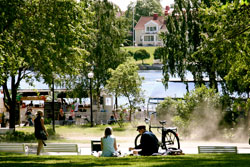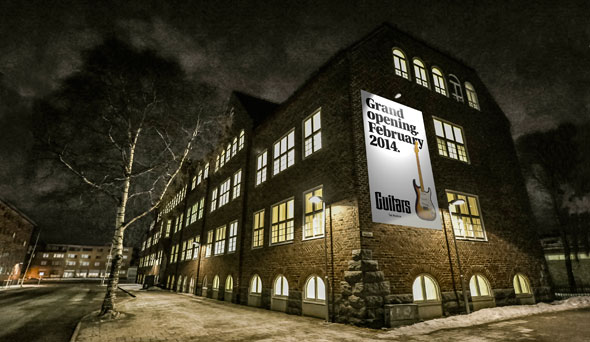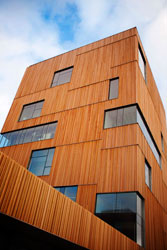Umeå – European Capital of Culture 2014

Umeå is popularly known as the City of Birches, which dates from 1888 and the enormous city fire that devastated large areas of the city. When Umeå was rebuilt, wide avenues with birches planted along them were used as fire breaks to prevent fires from spreading. There are now more than 3000 birch trees in the city centre.
With 118 000 inhabitants is Umeå is today the most densely populated and expansive town in northern Sweden. The 36 000 students at the university mean that Umeå stays young and vital and offers lots of city-pulse activities like shopping, eating in restaurants and pubs, rock clubs, or having a picnic in the city park. Umeå has a unique span of activities in which Nordic nature, culture and history can be combined. The music scene offers everything from song and opera to major rock concerts and the jazz festival, which is one of the oldest in Europe. Umeå’s long and vibrant cultural life has put the region on the map – both at home and abroad. An acknowledgement of this is the city’s being named European Capital of Culture 2014. 
In the summer, beach life and boat trips draw you to the Baltic Sea about 350 km south of the Arctic Circle. Whitewater rafting trips are run along the Vindelälven, one of Sweden’s national rivers. Even a canoe is an excellent way to tour the islands and rivers. For the fishers, there are good salmon, trout, grayling and perch waters. There many golf courses in beautiful settings. Games can go on long into the light, summer nights (Sunrise at 2.21 a.m. Sunset at 10.59 p.m. ) Wintertime is embarking on a dog sled trek and experiencing the forest’s stillness and quiet a real adventure.
Umeå In the summer, beach life and boat trips draw you to the Baltic Sea about 350 km south of the Arctic Circle
Umeå is a part of Sápmi – the land of the Samis 
The Samis – the EU’s only indigenous people, have always regarded the northern region as a borderless country. Ubmeje, (the Sami word for Umeå) is a part of Sápmi – the lands inhabited by the Sami people – and their history, culture, livelihoods, religion and language. The Sami calendar year is a way of recording the shifting changes of the seasons and focusing on what is important in each and every period.
And that is why the program for Umeå 2014- European Capital of Culture is divided into eight seasons that embody the Sami’s calendar. The seasons have their own rhythm, formed by the Sami’s cultural heritage and closeness to nature. Every season has its own character and traits, just like the activities we have planned during the European Capital of Culture year.
The travel guide Lonely Planet ranks the top ten most interesting destinations in the world. For 2014, Sweden lands at a very creditable fourth place. A major reason for this is said to be the wide range of culture offered in Umeå during the European Capital of Culture year 2014.

